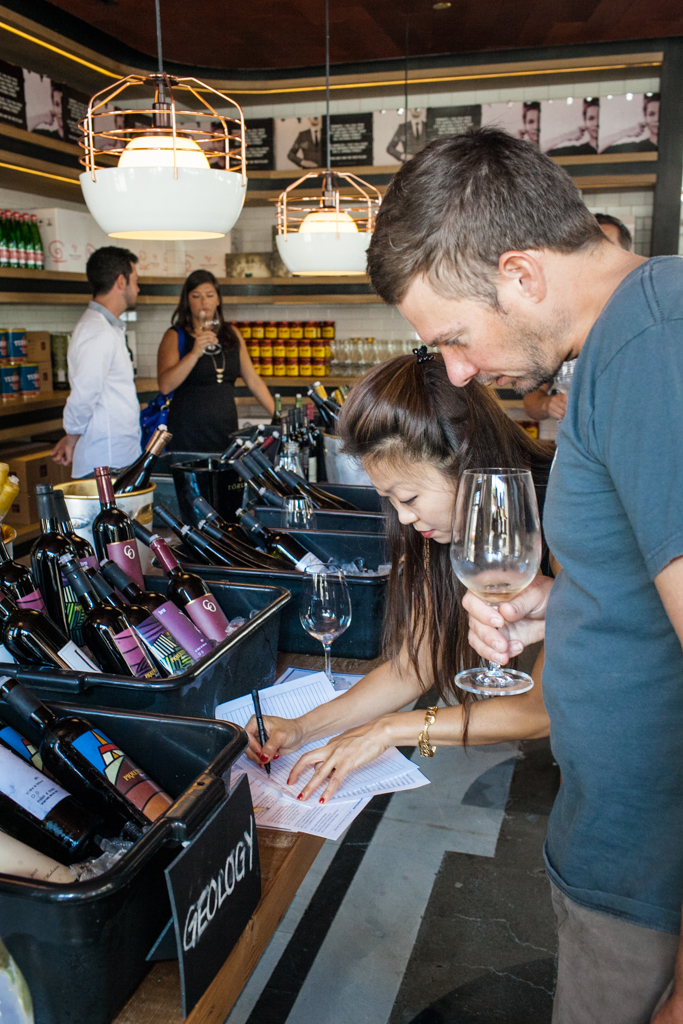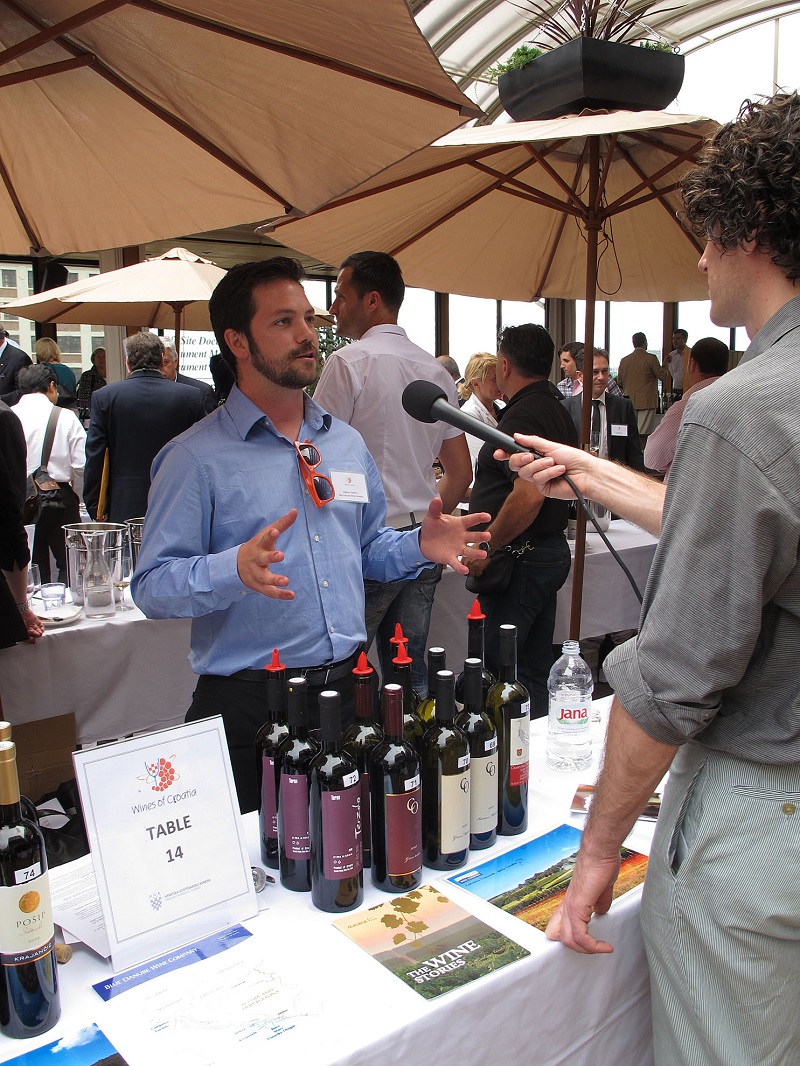With its 130 indigenous grape varieties – including the original Zinfandel – Croatian wine is attracting interest around the globe, but how easy is it to sell Croatian wine in the Zinfandel heartland of California? TCN interviewed Frank Dietrich and his team from Blue Danube on January 31, 2016, who are doing exactly that. And with great success.
1. Wines from Eastern Europe selling in a wine heartland such as California sounds like a tough sell. How did you come up with the idea and tell us how you started?
We hail from Europe and returned to Europe to build marketing and sales for a fast growing American computer company. This was in 1989, the historic year in which the Wall came down and the Iron Curtain opened. Soon we found ourselves living and working in Vienna, Austria, from where we organized the newly emerging markets in Eastern Europe. This coincided with the successful come-back of Austrian wine after the wine scandal. On our travels through Eastern Europe we encountered the first signs of a renaissance of wine culture. After our return to California we decided to leave hi-tech and start Blue Danube Wine, an import company dedicated to the wines of the ancient wine regions along the Danube River and the Eastern Mediterranean. We knew a lot of wine was historically produced here. Our hopes that the wines would become better over time have been confirmed vintage-by-vintage. It has been an exciting journey so far.

(Cliff Rames of WofC meets Alen Bibic of BIBICh winery to present Croatian wines in New York City.)
The new, young generation of wine makers active today in Central, East, and Southeast Europe has connected with the wine world at large, and at the same time is rediscovering the foundations of their region’s viticulture. The region as a whole is regaining its pride and self-confidence. All of this has helped us tremendously to bring these wines to the attention of American wine lovers and wine professionals alike. We are pleased that the reputation of these wines continues to grow at high speed. I have no doubt that soon we can even call it a commercial success story.

(Croatian tasting event for the trade in Los Angeles.)
2. Croatia is of course the home of the original Zinfandel (the grape Crljenak Kastelanski) and Californian Zinfandel is world famous. How are you raising awareness of the Croatian roots, and what levels of interest are you experiencing?
Our customers are very interested in the Croatian origins of Zinfandel, a grape variety from which the most popular American wine are made but whose background was unknown. We make it a point to mention the link between the grapes as a frame of reference, while also noting the differences. There are some who are quite surprised when they taste CK and discover a much leaner, more savory wine in comparison to many opulent California expressions. Overall, though, the response is positive and consumers enjoy its food friendliness.

(Anthony Bourdain thanks Vesna Bibic after his shoot for the TV show “No Reservations”)
3. Croatian wine producers typically have small production and global competition is huge. What competitive advantage do Croatian wines have in the US market?
The quality to price ratio is huge. There are many passionate producers handcrafting beautiful, age-worthy, and easy to drink wines at approachable price points. Croatia also still has a bit of mystery to it which is a draw for adventurous wine drinkers seeking the unfamiliar. Most importantly, Croatian wines bring interesting new flavors to the world of wine which are unique and can only be produced on Croatian terroir.

(Arrival of the Caric wines in the warehouse in USA.)
4. Who is your main market? Croatia’s diaspora must be pleased to have the connection to the homeland, for example.
While we do see a lot of interest from the Croatian community, we are starting to see more general enthusiasm as well. Croatia is becoming a popular vacation destination for Americans so they are experiencing the wine first hand. Many of our customers contact us in this context.
(Instagram promotion for a Croatian tasting at Birba wine bar in SF today (!))
5. What advice do you have for Croatian producers looking to export to America?
America is a big country and certainly represents a big market. Still, it is important to understand that it will take a fair amount of time and systematic effort to conquer it and realize the opportunities it offers. Maybe the most important first step is to find a business partner you can trust and who is willing to invest a significant part of their life and resources to develop a market for your wines and your brand. Be willing to support your partner with wine samples which are your best marketing tool, much more so than any fancy, expensive advertising. Visit the United States and get to know your customers and their preferences. You’ll also learn more about the many different alcohol laws each of the 50 states has. You will be better able to navigate this highly complex structure in which wine is sold and consumed. Be prepared that everything is different from what you are used to, not better, but different. Be prepared to be disappointed at times, hold tight and keep working on making your dreams come true, but never forget to keep your expectations realistic.

(Unloading a container from Dalmatia.)
6. Introduce us to a few of your most popular wines and growers.
Alen Bibić of the Bibich Winery in Skradin is one of our most well known producers in Dalmatia. In many ways he deserves credit for putting Skradin and Dalmatia back on the wine map. A life-long native, he learned to make wine from his grandfather. He hopes to sustain the long tradition of the indigenous white Debit and red Zinfandel relatives Babic, Plavina and Lasin unique to his home. Alen also has a taste for Grenache and Shiraz, of which he makes surprisingly Rhone-ish examples. His BIBICh R6 Riserva, a red blend composed of three grapes from the CK family (Babić, Lasin, Plavina) is a popular, signature wine.
In Istria, there is Moreno Coronica who produces one of the best examples of both Malvazia and Teran. Moreno founded his eponymous winery in 1992 after the break-up of communist Yugoslavia. He doesn’t follow fashion, favoring wines that are undeniably Istrian and reflective of the unique terroir. Entry level wines are fresh and fermented in stainless steel, while his higher end Gran Malvasia and Gran Teran spend some time in new and used French barrique, giving them additional structure and aging power.

(The Milos kids Ivan, Franica, and Joisp, at Roberta and Nenad’s home in San Francisco.)
The Miloš family is one of the top producers of Plavac Mali on the Pelješac Peninsula. Wines are produced from all estate fruit that is farmed organically. All three of Frano’s children work with him at the winery making this truly a family endeavor. Their prized wine is Stagnum which comes from 30 year old vines. The wine is aged for 3 years in Slavonian oak barrels before bottling and one to cellar for a few more years. Stagnum is a beautiful rendition of the multi-dimensional flavors of Plavac.
Our most popular wine is the very basic Plavac or Pelješac from the Dingač Vinarija. Both are medium bodied reds with appealing savory and herbacious qualities. We affectionately refer to them as “Donkey” wines because of the image on the label recalling the historical importance of the animal for harvest along the steep coastline. Our customers really love this wine and it is an easy, affordable gateway to the world of Croatian wine.

7. How do you think Croatian tourism is portrayed in America? What can the country do better to promote itself in this key market, and how strong is the interest in wine tourism, particularly with the Zinfandel connection?
Croatia is definitely on American’s radar and has been gaining in popularity ever since Croatia joined the EU on July 1st 2013. The notoriety brought on by Game of Thrones and Beyoncé vacations has certainly increased awareness for Croatia as well. For the majority of American tourists Croatia is still considered “exotic”, but for many independent tourists, Croatia is high on their list of places to visit.
Wine tourism and culinary tourism is currently one of the fastest growing segments of tourism. Coverage in traditional travel media and wine specific publications too, has increased the interest in wine tourism. Most wine tourists are interested in learning more about Croatian wine in general, not solely with regard to the Zinfandel connection, but it gives them a good point of reference and entrée to discovering the many other native varietals Croatia has to offer.
Marcy Gordon has written about wine tourism in Croatia.
The authors are part of Team Dalmatia which will be attending the Dalmatian Wine Expo in Split and then visit key wine regions: Peljesac, Korcula, Hvar, Primosten, and Skradin.
To learn more about Blue Danube and marketing Croatian wine in America, click here.










